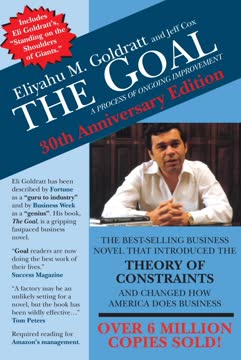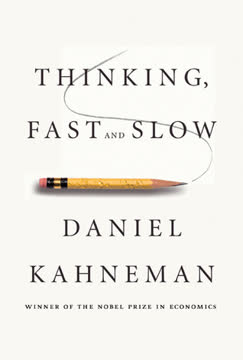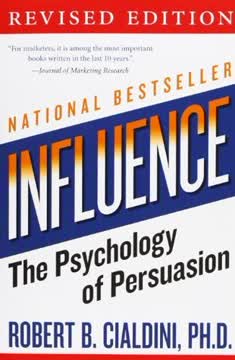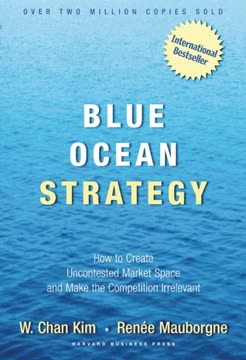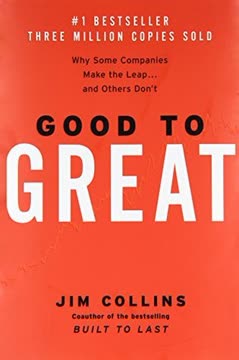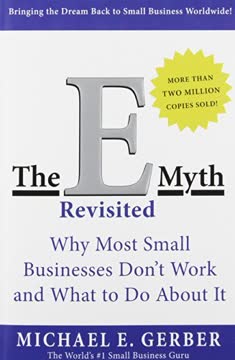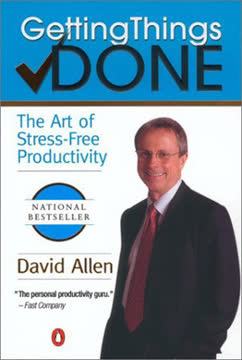முக்கியமான எடுத்துக்காட்டுகள்
1. உங்கள் கவனத்தைப் பிடிக்கும் அனைத்தையும் பதிவு செய்யுங்கள்
உங்கள் மனம் யோசனைகளை உருவாக்குவதற்காகவே, அவற்றைப் பிடிக்கவே இல்லை.
எல்லா திறந்த வட்டங்களையும் சேகரிக்கவும். உங்கள் மனதின் இடத்தைப் பிடிக்கும் ஒவ்வொரு பணியும், உறுதிமொழியும், யோசனையும் சேகரிக்கவும். இது முக்கிய திட்டங்களிலிருந்து சிறிய வேலைகளுக்குப் போதுமான தனிப்பட்ட மற்றும் தொழில்முறை கடமைகளை உள்ளடக்கியது. இந்த யோசனைகளை வெளிப்படுத்துவதற்காக காகிதங்கள், செயலிகள் அல்லது குரல் நினைவுகள் போன்ற உடல் மற்றும் டிஜிட்டல் கருவிகளைப் பயன்படுத்தவும்.
ஒரு சேகரிப்பு பழக்கத்தை உருவாக்கவும். உங்கள் மனதில் உள்ள அனைத்தையும் அடிக்கடி காலியாக்கவும். இந்த பழக்கம் மன அழுத்தம் மற்றும் மன குழப்பத்தை குறைக்கிறது, உண்மையில் முக்கியமானவற்றில் கவனம் செலுத்த அனுமதிக்கிறது. அனைத்தையும் பதிவு செய்வதன் மூலம், நீங்கள் மனதின் இடத்தை விடுவிக்கிறீர்கள் மற்றும் எதுவும் தவறாமல் போகாது என்பதற்கான உறுதிப்படுத்தலை வழங்குகிறீர்கள்.
செயல்முறை மீது நம்பிக்கை வையுங்கள். ஆரம்பத்தில், உங்கள் உறுதிமொழிகளின் அளவைக் கண்டுபிடிக்கும்போது இது சிரமமாக இருக்கலாம். இருப்பினும், உங்கள் மனதில் உள்ள அனைத்தையும் வெளியேற்றுவது கட்டுப்பாடு மற்றும் தெளிவை அடைய முதல் படியாகும். நீங்கள் பதிவு செய்த அனைத்தையும் செய்ய உறுதிமொழி அளிக்கவில்லை, அதன் இருப்பை மட்டும் ஒப்புக்கொள்கிறீர்கள் என்பதை நினைவில் வையுங்கள்.
2. ஒவ்வொரு உருப்படியின் விரும்பிய முடிவையும் அடுத்த நடவடிக்கையையும் தெளிவுபடுத்தவும்
முன்னேறுவதற்கான ரகசியம் ஆரம்பிப்பதுதான். ஆரம்பிப்பதற்கான ரகசியம் உங்கள் சிக்கலான, சிரமமான பணிகளை சிறிய, கையாளக்கூடிய பணிகளாக உடைக்கவும், பின்னர் முதலில் ஒன்றை தொடங்கவும்.
தெளிவான முடிவுகளை வரையறுக்கவும். நீங்கள் பதிவு செய்த ஒவ்வொரு உருப்படியிற்கும், "முடிந்தது" என்னவென்று வரையறுக்கவும். இந்த தெளிவு, உங்கள் மூளை பிரச்சினையைப் பற்றிய யோசனைகளை மட்டுமே செய்யாமல், விரும்பிய முடிவை அடைய கவனம் செலுத்த உதவுகிறது.
அடுத்த நடவடிக்கைகளை அடையாளம் காணவும். ஒவ்வொரு முடிவையும் குறிப்பிட்ட, உடல் நடவடிக்கைகளாக உடைக்கவும். "இந்த விஷயத்தை முன்னேற்ற என்ன அடுத்த நடவடிக்கை?" என நீங்கள் கேளுங்கள். இந்த படி, குழப்பமான யோசனைகளை உறுதியாக, செய்யக்கூடிய பணிகளாக மாற்றுகிறது.
அடுத்த நடவடிக்கைகளின் எடுத்துக்காட்டுகள்:
- திட்ட காலக்கெடுவைப் பற்றி ஜானை அழைக்கவும்
- விளக்கத்திற்கான வரைபடத்தை உருவாக்கவும்
- வரவிருக்கும் பயணத்திற்கான விமான விருப்பங்களை ஆராயவும்
3. நினைவுகளை நம்பகமான அமைப்பில் ஒழுங்குபடுத்தவும்
சக்தியை உருவாக்கும் உங்கள் திறன், ஓய்வுபெறும் உங்கள் திறனுக்கு நேரடியாக தொடர்புடையது.
நம்பகமான அமைப்பு உருவாக்கவும். தகவல்களை எளிதாக சேமிக்கவும், மீட்டெடுக்கவும் அனுமதிக்கும் ஒரு கட்டமைப்பை உருவாக்கவும். இது பணியாளர் மேலாண்மை செயலிகள் போன்ற டிஜிட்டல் கருவிகள் அல்லது கோப்பு அடுக்குகள் போன்ற உடல் அமைப்புகளை உள்ளடக்கலாம்.
சூழ்நிலையின்படி வகைப்படுத்தவும். பணிகளை எங்கு அல்லது எவ்வாறு முடிக்கலாம் என்பதற்கேற்ப குழுவாக வகைப்படுத்தவும். பொதுவான வகைகள்:
- @கணினி
- @தொலைபேசி
- @வேலைகள்
- @வீடு
- @அலுவலகம்
பிரித்த பட்டியல்களை பராமரிக்கவும். வெவ்வேறு வகை உருப்படிகளுக்கான தனித்த பட்டியல்களை வைத்திருக்கவும்:
- அடுத்த நடவடிக்கைகள்: உடனடி, உறுதியாக உள்ள பணிகள்
- திட்டங்கள்: பல படிகள் கொண்ட முடிவுகள்
- காத்திருக்கிறேன்: மற்றவர்களுக்கு ஒப்படைக்கப்பட்ட உருப்படிகள்
- ஒருநாள்/முடிந்தால்: எதிர்காலத்திற்கான யோசனைகள்
4. உங்கள் அமைப்பை அடிக்கடி மதிப்பீடு செய்து புதுப்பிக்கவும்
நீங்கள் உணர்வுகளைச் சரிசெய்யும் முறையைப் போலவே, செயல்களைச் சரிசெய்யும் முறையைச் செயல்படுத்துவது எளிது.
ஒரு வார மதிப்பீட்டை நடத்தவும். ஒவ்வொரு வாரமும் உங்கள் அமைப்பை மதிப்பீடு செய்து புதுப்பிக்க நேரத்தை ஒதுக்கவும். இந்த பழக்கம் உங்கள் பட்டியல்கள் தற்போதைய மற்றும் தொடர்புடையதாக இருக்க உறுதிப்படுத்துகிறது.
வார மதிப்பீட்டு செயல்முறை:
- அனைத்து சிதறிய ஆவணங்கள் மற்றும் பொருட்களைச் சேகரிக்கவும்
- உங்கள் குறிப்புகளை செயலாக்கவும்
- முந்தைய காலண்டரை மதிப்பீடு செய்யவும்
- வரவிருக்கும் காலண்டரை மதிப்பீடு செய்யவும்
- நடவடிக்கை பட்டியல்களை மதிப்பீடு செய்யவும்
- திட்ட பட்டியல்களை மதிப்பீடு செய்யவும்
கண்ணோட்டத்தை பராமரிக்கவும். உங்கள் உறுதிமொழிகளை மண்ணில் உள்ள நடவடிக்கைகள் முதல் வாழ்க்கை இலக்குகள் வரை வெவ்வேறு நிலைகளில் மதிப்பீடு செய்ய இந்த நேரத்தைப் பயன்படுத்தவும். இந்த பழக்கம், தினசரி பணிகளை நிர்வகிக்கும் போது, உங்கள் பரந்த இலக்குகளுடன் இணைந்திருக்க உதவுகிறது.
5. உங்கள் மிக முக்கியமான பணிகளில் நடவடிக்கை எடுக்கவும்
அதிர்ஷ்டம் அனைத்தையும் பாதிக்கிறது. உங்கள் கம்பியை எப்போதும் வீசுங்கள்; நீங்கள் எதிர்பாராத இடத்தில் ஒரு மீன் இருக்கும்.
இரு நிமிட விதியை செயல்படுத்தவும். ஒரு பணிக்கு இரண்டு நிமிடங்கள் குறைவாக ஆகினால், உடனே அதை செய்யுங்கள். இந்த கொள்கை, சிறிய பணிகள் குவிந்து உங்கள் அமைப்பை அடிக்கடி தடுக்கும் என்பதைக் குறைக்கிறது.
நடவடிக்கைகளை தேர்வு செய்ய நான்கு அளவுகோல் மாதிரியைப் பயன்படுத்தவும்:
- சூழ்நிலை: உங்கள் தற்போதைய இடம் மற்றும் கிடைக்கும் கருவிகளைப் பயன்படுத்தி நீங்கள் என்ன செய்யலாம்?
- கிடைக்கும் நேரம்: உங்கள் அடுத்த உறுதிமொழிக்கு முன் உங்களுக்கு எவ்வளவு நேரம் உள்ளது?
- கிடைக்கும் சக்தி: உங்களுக்கு எவ்வளவு மன மற்றும் உடல் சக்தி உள்ளது?
- முன்னுரிமை: மேலே உள்ள காரணிகளைப் பொருத்தவரை, செய்ய வேண்டிய மிக முக்கியமான விஷயம் என்ன?
உங்கள் உள்ளுணர்வில் நம்பிக்கை வையுங்கள். உங்கள் உறுதிமொழிகள் மற்றும் அடுத்த நடவடிக்கைகள் பற்றிய தெளிவான கண்ணோட்டம் பெற்ற பிறகு, நீங்கள் என்ன செய்ய வேண்டும் என்பதை தீர்மானிக்கும்போது உங்கள் உள்ளுணர்வில் நம்பிக்கை வையுங்கள். உங்கள் மனம், செயலாக்கப்படாத உள்ளீடுகளால் குழப்பமடையாத போது, உள்ளுணர்வுப் பொறுப்புகளை எடுக்கத் திறந்ததாக இருக்கும்.
6. மன அழுத்தமில்லாத உற்பத்தித் திறனை கற்றுக்கொள்ளுங்கள்
நாம் செய்யக்கூடிய ஒரு விஷயம் உள்ளது, அதில் மிகுந்த மகிழ்ச்சியுடன் இருப்பவர்கள், அவர்களின் திறனை முழுமையாக செய்யக்கூடியவர்கள். நாம் முழுமையாக இருக்கலாம். நாம் இங்கு அனைத்தும் இருக்கலாம். நாம்... எங்கள் முன்னிலையில் உள்ள வாய்ப்புக்கு முழு கவனம் செலுத்தலாம்.
நீரைப் போல மனதை அடையுங்கள். எந்த容器த்திற்கும் ஏற்ப அடிக்கடி தயாராகவும், மாறுபடவும் முயற்சிக்கவும். இந்த மனநிலையை, வாழ்க்கை உங்களுக்கு எதையும் எவ்வாறு எதிர்கொள்வதற்கான முறையாகவும், அதிகமாக அல்லது குறைவாக எதிர்வினையளிக்காமல் பதிலளிக்கவும் அனுமதிக்கிறது.
மன அழுத்தத்தை நீக்கவும். உங்கள் அனைத்து உறுதிமொழிகளைப் பதிவு செய்து தெளிவுபடுத்துவதன் மூலம், முடிக்கப்படாத பணிகள் மற்றும் தெளிவற்ற கடமைகள் ஏற்படுத்தும் மென்மையான மன அழுத்தத்தை நீக்குகிறீர்கள். இது, கவனம் செலுத்திய வேலை மற்றும் படைப்பாற்றலுக்கான மன சக்தியை விடுவிக்கிறது.
முடிவுகளைப் பற்றிய யோசனையைப் பயிற்சி செய்யவும். உங்கள் திட்டங்கள் மற்றும் இலக்குகளுக்கான வெற்றிகரமான முடிவுகளை அடிக்கடி கற்பனை செய்யவும். இந்த பழக்கம், உங்கள் மூளை விரும்பிய முடிவுகளுடன் ஒத்துப்போகும் வாய்ப்புகள் மற்றும் தீர்வுகளை கவனிக்க தயாராக இருக்கிறது.
7. உங்கள் வேலை மற்றும் வாழ்க்கைக்கு அணுகுமுறையை மாற்றவும்
நான் என்ன நினைக்கிறேன் என்பதை நான் எப்படி அறிவேன், நான் என்ன சொல்கிறேன் என்பதை நான் கேட்கும் வரை?
நேரத்தை நிர்வகிப்பதை நிறுத்தி, கவனத்தை நிர்வகிக்கவும். ஒவ்வொரு நாளிலும் அதிகமாக squeezed செய்ய முயற்சிப்பதற்குப் பதிலாக, உங்கள் கவனத்தை திறமையாக இயக்குவதில் கவனம் செலுத்துங்கள். இந்த அணுகுமுறை, நேரம் மட்டுமல்லாமல், சக்தி மற்றும் கவனம் முக்கியமான வளங்கள் என்பதைக் குறிக்கிறது.
"அடுத்த நடவடிக்கை" மனப்பாங்கை ஏற்றுக்கொள்ளுங்கள். உங்கள் சுற்றியுள்ளவர்களை, எப்போதும் முன்னேற்றம் செய்ய தேவையான அடுத்த உடல், தெளிவான நடவடிக்கையை அடையாளம் காண பயிற்சி செய்யுங்கள். இந்த பழக்கம், தாமதத்தைத் தடுக்கும் மற்றும் திட்டங்களை தொடர்ச்சியாக வைத்திருக்கிறது.
செயலுக்கு முன்னுரிமை கொடுக்கவும். சிறிய பணிகளில் உடனடி நடவடிக்கை எடுக்கவும், பெரிய திட்டங்களுக்கு அடுத்த படிகளைப் பற்றிய விரைவான முடிவுகளை எடுக்கவும் பழக்கத்தை உருவாக்குங்கள். இந்த முன்னணி அணுகுமுறை, வேகத்தை மற்றும் நம்பிக்கையை உருவாக்குகிறது.
குறைந்த எதிர்ப்பு கொண்ட நம்பகமான அமைப்பை உருவாக்குங்கள். உங்கள் அமைப்பை எளிதாகவும், பயன்படுத்துவதில் மகிழ்ச்சியாகவும் வடிவமைக்கவும், நீங்கள் இயல்பாக அதில் ஈடுபடுவீர்கள். பதிவு செய்வது, தெளிவுபடுத்துவது மற்றும் மதிப்பீடு செய்வது எளிதாக இருந்தால், நீங்கள் அந்த அமைப்பை பராமரிக்க அதிக வாய்ப்பு உள்ளது.
கடைசியாக புதுப்பிக்கப்பட்டது:
FAQ
What's "Getting Things Done: The Art of Stress-Free Productivity" about?
- Overview: "Getting Things Done" by David Allen is a guide to organizing tasks and commitments to achieve stress-free productivity. It introduces a system to manage work and life efficiently.
- Main Focus: The book emphasizes capturing all tasks and commitments in a trusted system outside the mind, clarifying actions, and organizing them for review and execution.
- Purpose: It aims to help individuals clear their minds of clutter and focus on completing tasks effectively, providing a structured approach to managing tasks, projects, and responsibilities.
- Target Audience: Ideal for anyone feeling overwhelmed by their workload, from executives to homemakers, offering practical advice to regain control and clarity.
Why should I read "Getting Things Done"?
- Improved Productivity: The book offers practical techniques to enhance productivity by organizing tasks and reducing stress, helping readers focus on what truly matters.
- Stress Reduction: By capturing tasks in a trusted system, it alleviates the mental burden of remembering tasks, leading to a calmer, more focused mind.
- Universal Applicability: The principles can be applied to both personal and professional life, making it a versatile resource for improving organizational skills.
What are the key takeaways of "Getting Things Done"?
- Capture Everything: Collect all tasks, ideas, and commitments in a reliable system to prevent mental clutter and allow for better focus.
- Clarify Actions: Define the next physical action required for each task to prevent procrastination and ensure steady progress.
- Regular Review: Consistent review of tasks and projects is crucial to maintaining control and focus, with a recommended weekly review to update and organize commitments.
How does the GTD system work?
- Five Stages: The GTD system consists of five stages: capture, clarify, organize, reflect, and engage, each designed to help manage tasks efficiently.
- Capture Everything: Collect all tasks, ideas, and commitments in a trusted system outside your head to free up mental space.
- Clarify and Organize: Determine the next action for each task and organize them into appropriate categories for review and execution.
What is the "mind like water" concept in "Getting Things Done"?
- Definition: "Mind like water" is a state of relaxed control where you respond appropriately to any situation without overreacting or underreacting.
- Achieving the State: By capturing, clarifying, and organizing tasks, you can achieve this state, allowing you to focus on the present moment and make better decisions.
- Benefits: This state leads to increased productivity, reduced stress, and a greater sense of well-being, as you are no longer burdened by mental clutter and unfinished tasks.
What is the "Natural Planning Model" in "Getting Things Done"?
- Five Phases: The Natural Planning Model consists of defining purpose and principles, outcome visioning, brainstorming, organizing, and identifying next actions.
- Purpose and Vision: Start by defining the purpose and envisioning the successful outcome of a project, providing direction and motivation.
- Brainstorming and Organizing: Generate ideas and organize them into a coherent plan, identifying the next actions required to move the project forward.
How can "Getting Things Done" help with procrastination?
- Next-Action Clarity: The book emphasizes defining the next physical action required for each task, reducing hesitation and encouraging progress.
- Breaking Tasks into Steps: Allen's method involves breaking down projects into manageable steps, making them less daunting and building momentum.
- Regular Review and Organization: Regular reviews help keep priorities clear and manageable, avoiding the last-minute rush that often results from procrastination.
How does the "two-minute rule" work in "Getting Things Done"?
- Definition of the Rule: If a task can be completed in two minutes or less, it should be done immediately to prevent small tasks from accumulating.
- Application in Daily Life: The rule can be applied to tasks like responding to emails or making quick phone calls, encouraging prompt action.
- Benefits of the Rule: It leads to a significant reduction in clutter and an increase in productivity by quickly clearing minor tasks.
What are some of the best quotes from "Getting Things Done" and what do they mean?
- "Your mind is for having ideas, not holding them." Emphasizes freeing the mind from remembering tasks to enhance creativity and problem-solving.
- "The art of resting the mind..." Highlights the value of achieving a clear mind, free from stress and mental clutter, to enhance productivity and well-being.
- "You can do anything, but not everything." Reminds to prioritize tasks and focus on what truly matters, rather than trying to do everything at once.
How can I implement the GTD system in my daily life?
- Start with Capturing: Begin by collecting all tasks, ideas, and commitments in a trusted system outside your head using tools like notebooks or digital apps.
- Clarify and Organize: Determine the next action for each task and organize them into appropriate categories for review and execution.
- Regular Review: Set aside time each week to review and update your system, ensuring it remains functional and up-to-date.
What tools and systems does "Getting Things Done" recommend for organization?
- In-Baskets and Filing Systems: Use physical or digital in-baskets to capture all incoming tasks and information, and maintain a well-organized filing system.
- Action Lists and Calendars: Maintain action lists categorized by context and use a calendar for time-specific tasks and appointments.
- Digital Tools: Apply GTD principles using modern digital tools like task management apps and digital calendars, integrating them into a cohesive system.
How can "Getting Things Done" be applied in a team or organizational setting?
- Shared Language and Practices: Adopt a shared language and practices for task management, improving communication and collaboration.
- Accountability and Clarity: Define next actions and outcomes clearly to enhance accountability and avoid misunderstandings within a team.
- Cultural Shift: Promote a focus on productivity and efficiency, reducing stress and improving task management for better results and a positive work environment.
விமர்சனங்கள்
செயல்களை முடிக்கவும் என்ற புத்தகம் அதன் நடைமுறை உற்பத்தி முறைமையின் காரணமாக பெரும்பாலும் நேர்மறை விமர்சனங்களைப் பெறுகிறது. பல வாசகர்கள் இதனை வாழ்க்கையை மாற்றும் புத்தகம் எனக் கருதுகிறார்கள், இதன் செயல்முறைகள் பணிகளை ஒழுங்குபடுத்துவதில், மன அழுத்தத்தை குறைப்பதில் மற்றும் மனதின் குழப்பத்தை நீக்குவதில் உதவுகின்றன. யோசனைகளைப் பிடிப்பது, மின்னஞ்சல்களை செயலாக்குவது மற்றும் அடுத்த நடவடிக்கைகளை அடையாளம் காண்பது போன்ற அம்சங்கள் பலருக்கும் தொடர்புடையதாக இருக்கின்றன. சிலர் இதன் நிறுவன மையமான கவனம் மற்றும் பழமையான கூறுகளை விமர்சிக்கிறார்கள், மற்றவர்கள் இதனை தேவையற்ற அளவுக்கு நீளமானது மற்றும் மீண்டும் மீண்டும் கூறப்படுகிறதெனக் கருதுகிறார்கள். மொத்தத்தில், வாசகர்கள் செயல்படுத்தக்கூடிய ஆலோசனைகளைப் பாராட்டுகிறார்கள் மற்றும் GTD முறைமையை செயல்படுத்திய பிறகு அதிக செயல்திறனை மற்றும் மனத் தெளிவை அனுபவிக்கிறார்கள்.
Similar Books

